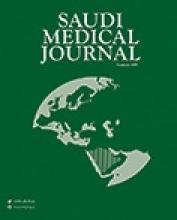Abstract
OBJECTIVES: To determine device-associated infection (DAI) rates, and the microbiological and antibiotic resistance profiles of infecting pathogens in our hospital.
METHODS: Prospective surveillance of healthcare-associated infections was performed from January 2007 to March 2010 in 4 different intensive care units (ICUs) of SB Diskapi Yildirim Beyazit Training and Research Hospital, Ankara, Turkey.
RESULTS: During the study period, 6,005 patients were followed-up in ICUs for a total of 46,355 patient-days. The total number of DAIs was 969. Catheter-associated urinary tract infection (CAUTI) was the most common DAI (55.3% of DAIs; 11.9 cases per 1000 catheter-days), followed by ventilator-associated pneumonia (VAP) (38.9% of DAIs; 21.2 cases per 1000 ventilator-days), and central line-associated blood stream infection (CLABSI) (5.8% of DAIs; 2.8 cases per 1000 central line-days). The most frequently isolated pathogens in patients with VAP were Acinetobacter species (24.5%) and Escherichia coli in CAUTI (24.2%). Coagulase negative Staphylococci and Candida species were the leading pathogens in patients with CLABSI.
CONCLUSIONS: We observed considerably high rates of VAP and CAUTI and a high rate of CLABSI in our ICUs when compared with the National Healthcare Safety Network data. These findings emphasize the need to improve infection control practices and management of invasive device use in our hospital.
- Copyright: © Saudi Medical Journal
This is an open-access article distributed under the terms of the Creative Commons Attribution-Noncommercial-Share Alike 3.0 Unported, which permits unrestricted use, distribution, and reproduction in any medium, provided the original work is properly cited.






